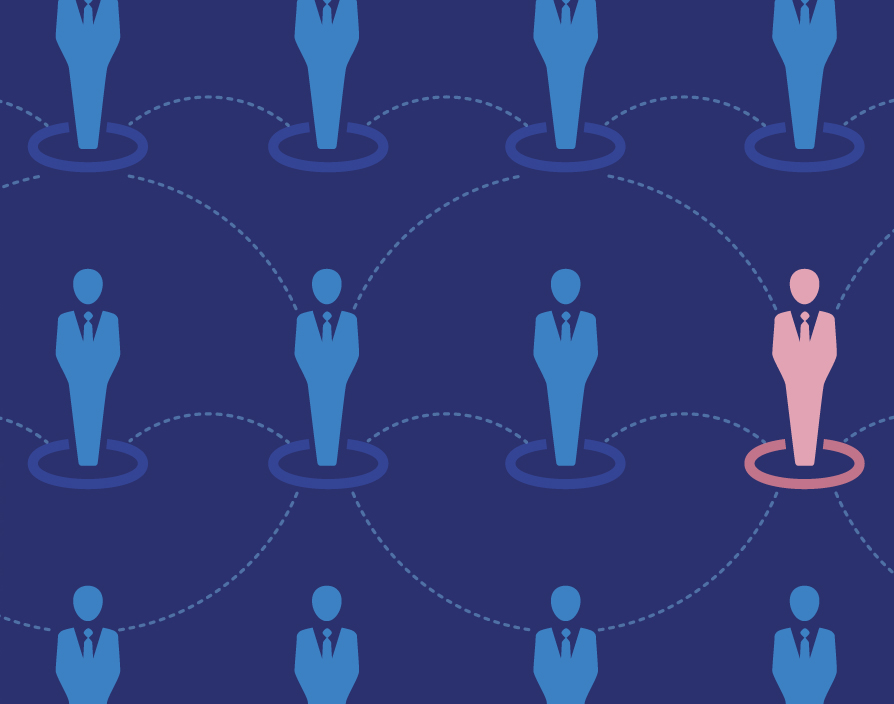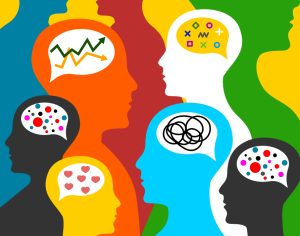Thanks to increasing levels of computational power and an ocean of available data, algorithms and artificial intelligence (AI) are increasingly gaining sway in the world of business. And having seen how these tools have informed better decisions and boosted efficiencies across disciplines such as marketing or finance, it was inevitable businesses would start trying to harness them in the war for talent. “The world is starting to see the usefulness of data and software to help solve really difficult problems,” says Alistair Shepherd, co-founder of Saberr, the HR analytics tool that uses algorithms to improve hiring decisions and internal team formation. “It makes sense that they might also be applicable to the way we hire.”
As a result, many recruiters have been exploring the ways in which algorithms and AI can help them better acquire talented candidates. “One of the earliest applications involving data or software within the HR space was in CV screening,” Shepherd says. Recruitment experts have long used simple algorithms to filter applications based on positive or negative keywords, making it easy to draw up a shortlist of candidates with the preferred skills and experience. However, as this technique became more commonplace in business circles, it became clear that keywords alone teach companies very little about what potential candidates are actually like. “If you just look for buzzwords, you end up with a cookie-cutter employee,” says Shepherd.
Fortunately, with time the way analytics and algorithms are deployed in the recruitment space has become increasingly sophisticated. Recruiters have at their disposal more data sources than ever before, meaning they can dig far deeper than just mining CVs for keywords. “There’s a wealth of information available to recruiters,” says James Eiloart, senior vice president of Tableau, the data visualisation and business intelligence company. “Some of today’s best data analytics tools make it easy for anyone to connect to a variety of sources.”
Whether they’re harvesting data from candidates on social media or through recruitment portals, startups’ ability to form a data rich picture of candidates is rapidly improving. “More than ever, data [can provide] valuable insights about whether someone is suitable for a specific role,” Eiloart says.
Beyond factors like capabilities and competencies, perhaps one of the biggest considerations for many startups looking to bring talent on board will be how it fits in with the company’s culture. However, keeping a firm handle on an evolving culture isn’t always straightforward. “When you’re trying to grow your business, launch products and hit sales targets, it’s hard to consciously pause operations and take a good hard look at the culture you’ve built,” says James Peck, UK managing director of Jobandtalent, the international jobs marketplace.
As a result, any software that can help a business ensure the candidates coming through the door will be the right fit before they even walk into an interview will significantly salve its growing pains. “Tools and technologies that can help you have that awareness right up front are very valuable,” Peck says.
But understanding these factors can be tricky enough for a person – let alone for some lines of code. “Predicting human behaviour and interactions is complex,” says Shepherd. “It’s quite a nebulous problem.” Despite this, there are some shortcuts that can help an algorithm assess how well a potential hire is likely to work within a team. For example, gathering datasets that pertain to candidates’ values means a recruitment tool can better assess how well they’re likely to fit within the company culture. “What are the intrinsic motivators that dictate your decision-making? Are we aligned on those?” he says. “If we are, we’re likely to have higher levels of performance.”
However, while algorithms may be able to top human talent spotters when it comes to experience, capability or cultural fit, surely they can’t rival intuition? Certainly gut instinct still plays a significant role in many hiring decisions, with research conducted by Come Recommended, the HR-tech PR firm, finding that 33% of bosses know within 90 seconds whether they intend to hire someone. “Most interviewers tend to place a large emphasis on the way a candidate comes across and makes them feel in a conversation,” says Eiloart.
This kind of instinctive reasoning can prove incredibly powerful. “Human intuition can take in an enormous range of inputs in order to come up with a decision,” Shepherd says. Historically AI and algorithms have struggled to deal with these kinds of heterogeneous datasets but as the technology becomes more sophisticated it’s increasingly able to make the kind of split-second judgements that human beings excel at. “The algorithms of today are getting better at taking into account this broad range of inputs to then synthesise more nuanced decisions,” he says.
One large drawback of relying on intuition however is that there is a higher risk of introducing biases into the hiring process. Given that human beings have a tendency to hire candidates they relate to, even the most impartial individuals can have unconscious predispositions towards certain kinds of people. “People are fallible,” Shepherd says. “Even though we try to mitigate them as much as we can, we all have biases.” But adopting an algorithmic approach to recruitment can help make things that are typically implicit become explicit, taking into account the factors that matter while being blind to others such as race, class, physical appearance or gender. “It’s a really exciting opportunity,” says Shepherd. “By using software, you can make a business a more inclusive and diverse place to work.”
Algorithms aren’t entirely impervious to errors in judgement, however. While machines are hardly likely to let personal prejudices get in the way, unintentional biases can still creep in during software development that could end up excluding candidates of certain demographics and skewing the nature of the talent a company eventually hires. “We don’t want people getting passed over because of an overly aggressive algorithm,” says Peck. “If there’s a bug that somehow prevents people being treated equally then it needs to be fixed.”
Thankfully addressing these issues is comparatively trivial, as rooting out biases in software is much easier than in human beings. “Just by the fact that I am human, my decision making is a black box,” says Shepherd. “My brain can’t be interrogated; you can’t understand the biases that I have internally.” Conversely, algorithms can easily be opened up and dissected: if a startup suspects that there are flaws with its recruitment tools, its fairly easy to open them up and shine a light on their internal workings. “With software, you can really test, interrogate and probe it to the point where you can prove beyond doubt that it is not biased,” he says.
Without a shadow of a doubt, the role of AI, algorithms and big data in talent acquisition is only set to increase as time goes on. However, will we one day see a future where robots handle all of our recruitment without a human in the loop?
Given the huge value human beings can bring to the interview table, Eiloart feels it’s unlikely. “Anyone who has ever conducted an interview […] knows that there are unexpected moments – from feeling the unique passion of an individual come across in conversation to building a level of trust when looking a candidate in their eyes,” he concludes. “These moments make us all human and should always be part of the hiring process.” ![]()
Share via:








































